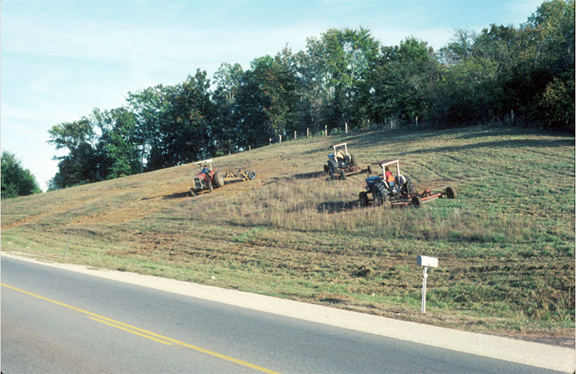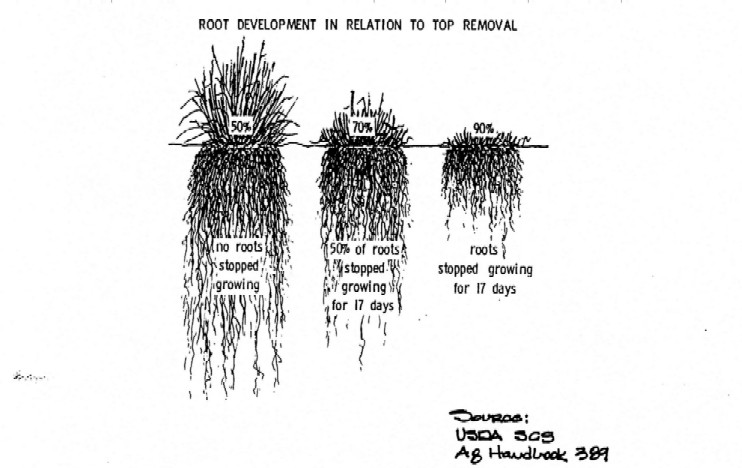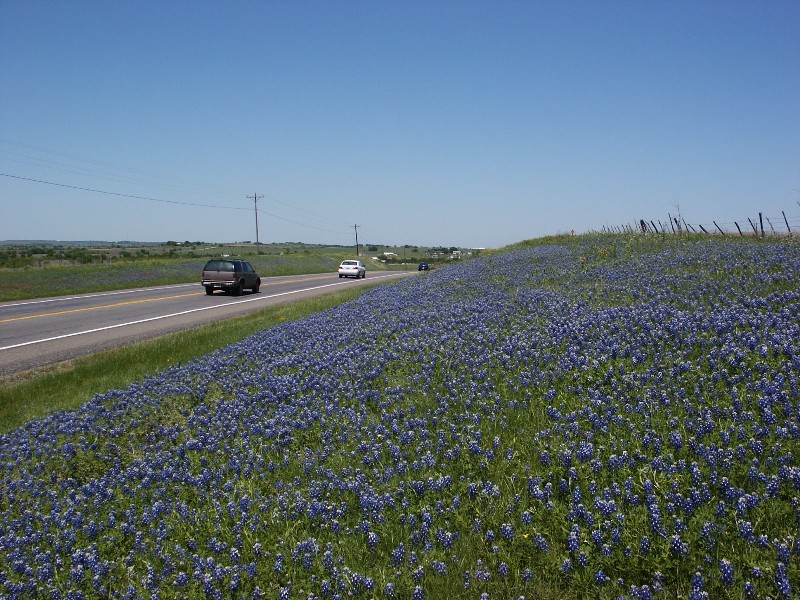Section 6: Other Precautions
Anchor: #i1002958Overview
The main purpose of the vegetative cover on the right of way is to protect the roadside from erosion. Left unprotected, deterioration would occur, threatening the paved surface of the roadway. Mowing is an important component of roadside vegetation management, but it must be conducted with care to preserve the vegetative cover. Observing the precautions contained in this section will help:
- Anchor: #MYCJNTXK
- ensure efficient and environmentally sound mowing operations Anchor: #GPWSPVSV
- promote wildlife habitat Anchor: #DKUHTAMN
- maintain seed sources for the state’s native flora.
Delay Mowing When Soil Is Wet
When the soil is wet, delay mowing. Tractor tires cause severe rutting in wet soil as shown in Figure 2-15. Rutting, especially on slopes, causes erosion and leads to the spread of noxious weeds. Erosion leads to deterioration of the roadside and threatens the paved surface of the roadway.
Anchor: #i1002993Avoid Mowing Steep Slopes
Avoid mowing steep slopes (3:1 ratio or steeper), even in urban areas, whenever possible. Mowing steep slopes increases compaction, causes slope failure and rutting and decreases the vigor of the vegetation. Loss of plant growth results in slope erosion.
Figure 2-15. Mowing steep slope (rutting and slope failure).
Anchor: #i1003017Use Appropriate Cutting Height
Never set mower cutting height lower than seven inches in rural areas and five inches in urban areas.
Low cutting (also called “scalping”) is undesirable because it:
- Anchor: #VCNLLDRG
- produces stress in the vegetation, especially during dry, hot conditions, resulting in loss of desirable vegetative cover Anchor: #UMOMFKTF
- deprives ground-nesting wildlife of cover Anchor: #PHOIFHTU
- increases the number of objects thrown
by mowers (objects thrown by mowers represent about 12 percent of
all claims against the department each year).
Figure 2-16. Example of root development in relation to top removal.
Coordinate Mowing with Grass Seed Production
Effective mowing operations require coordination with seasonal cycles, as well as with other roadside maintenance activities.
In late summer and early fall, grasses produce seed-heads. Seed-heads develop very rapidly and, if cut, will regenerate in eight to 12 days. Mowing operations during seed-head production result in wasted time and money.
After seed-heads mature in October and November, grasses will become dormant. Mowing after this period will result in a clean right of way until spring.
NOTE: Where Little Bluestem, Sideoats Grama, Indian Grass, Switchgrass, Green Sprangletop, Sand Bluestem, Western Wheatgrass, or Plains Bristlegrass are the predominant grass, they should be mowed in the late fall.
NOTE: Remember to cut grass no less than seven inches high to provide residual material to protect next year’s early ground-nesting wildlife and ensure healthy grass regeneration. Panhandle roadsides, for example, provide much needed protective cover for pheasants with proper management of key backslopes. (The backslope is the area of right of way beyond the drainage ditch that slopes away – either up or down – from the plane of the roadway.)
Figure 2-17. Beautiful right of way, mowing operations coordinated in Waco District.


